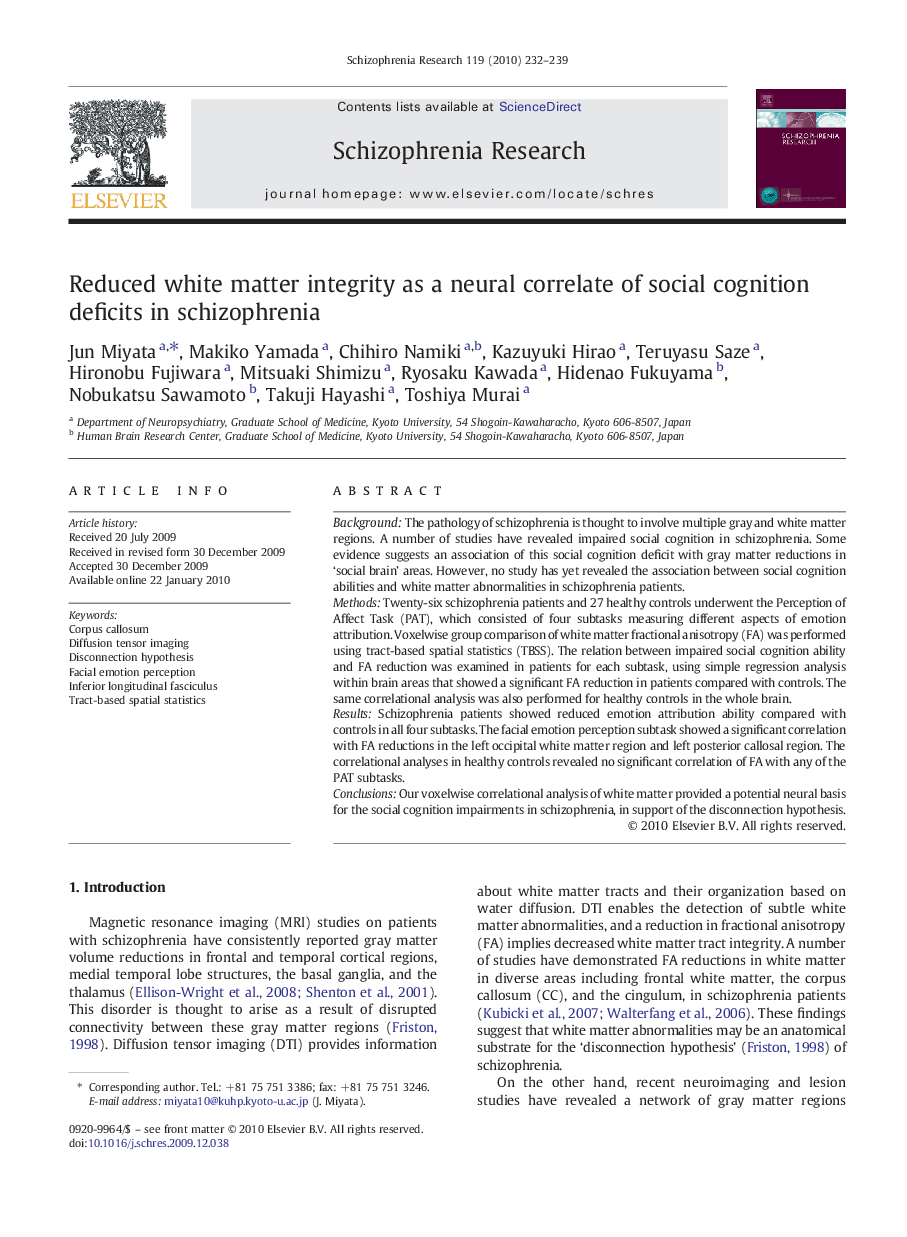| Article ID | Journal | Published Year | Pages | File Type |
|---|---|---|---|---|
| 341643 | Schizophrenia Research | 2010 | 8 Pages |
BackgroundThe pathology of schizophrenia is thought to involve multiple gray and white matter regions. A number of studies have revealed impaired social cognition in schizophrenia. Some evidence suggests an association of this social cognition deficit with gray matter reductions in ‘social brain’ areas. However, no study has yet revealed the association between social cognition abilities and white matter abnormalities in schizophrenia patients.MethodsTwenty-six schizophrenia patients and 27 healthy controls underwent the Perception of Affect Task (PAT), which consisted of four subtasks measuring different aspects of emotion attribution. Voxelwise group comparison of white matter fractional anisotropy (FA) was performed using tract-based spatial statistics (TBSS). The relation between impaired social cognition ability and FA reduction was examined in patients for each subtask, using simple regression analysis within brain areas that showed a significant FA reduction in patients compared with controls. The same correlational analysis was also performed for healthy controls in the whole brain.ResultsSchizophrenia patients showed reduced emotion attribution ability compared with controls in all four subtasks. The facial emotion perception subtask showed a significant correlation with FA reductions in the left occipital white matter region and left posterior callosal region. The correlational analyses in healthy controls revealed no significant correlation of FA with any of the PAT subtasks.ConclusionsOur voxelwise correlational analysis of white matter provided a potential neural basis for the social cognition impairments in schizophrenia, in support of the disconnection hypothesis.
